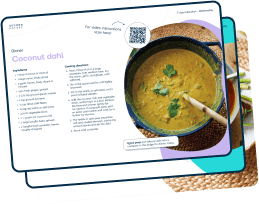Jump to: Identify your intrinsic motivations | Make it social | Wrap up: there’s no such thing as bad weather, only unsuitable clothing | Take home message
Exercise is a challenging habit to develop and maintain. It’s estimated that around 60% of U.S. and UK adults don’t meet the general recommendations to complete 150 minutes of physical activity per week. At the same time, it’s estimated that a quarter of the planet’s population is not active enough.
This is particularly true in winter when the cold weather sets in. Recent research suggests that seasonality plays a role and that physical activity levels drop significantly during the winter months.
There are likely several factors contributing to this; the colder weather, the shorter days, and the winter blues (seasonal affective disorder or SAD) are all possible reasons why people will stop exercising as much as they do during the rest of the year.
Fortunately, we’ve put together three strategies to help:
- Identify your intrinsic (internal) motivations: Exercise habits normally wane because people do it for external reasons. Share your activity on Strava or get your ‘summer body’. When the winter comes, and the barriers to exercise are greater, these are no longer strong enough to keep you going. One of our health coaches and nutritionists, Natasha, has put together this values tool; run through it and identify your core values and why exercise and movement are important for you.
- Make it social: Evidence shows that creating a social environment with your exercise activities will make it more likely to maintain them, even during those dark winter nights. Join a local club or recruit some friends to join you in your activities.
- Wrap-up: Exercising in harsher conditions can help develop resilience, but it doesn’t mean you shouldn’t be prepared for the weather. Get the right clothes, warm up, and find liberation in exercising in the extremes. As Alfred Wainwright famously said, “There’s no such thing as bad weather, only unsuitable clothing.”
At Second Nature, you’re supported by a registered nutritionist or dietitian and a group of others looking to improve their health, maintain a healthy body weight, and maintain an exercise routine.
You could join people like Becky, who found her internal drivers to exercise and live healthier.
If you’d like to give us a go, click here to take our health quiz.
Otherwise, keep reading as we look at the three strategies above in more detail to help you maintain your exercise habits this winter.
Medication-assisted weight loss with a future focus
Start with Wegovy or Mounjaro, transition to habit-based health with our support


1) Identify your intrinsic motivations
There’s a misconception that all you need to do is set goals, take them step by step, and you’ll achieve all of your exercise of health ambitions. While goal setting can play an important role, you first must identify the why before thinking about the what and the how.
This is what your values are; they’re your why. They’re why you have a family, are loyal to your friends, or continue to learn and improve in your job. It’s because those things tie to your internal value and provide you with a sense of purpose and fulfilment.
Exercise is no different. We all know what we need to do (move more) and how to do it (walk, run, etc). But why do you want to exercise? What benefits will exercise bring to you? What does it say about you as an individual?
Complete the following exercise to help you identify your values:
Step 1) Name a time that you were truly happy…
For example, “When I was hiking in the Lake District with my family.”
Step 2) What was it about that time that made you so happy?
For example, “I was spending time with my family, away from distraction and stress, and being out in nature.”
Step 3) Identify values from step 2
For example, this individual values:
- Family
- Balance
- Nature
- Adventure
From these values, you can then allow these to guide and motivate your actions. Let’s say you’re planning a run at lunchtime, but it starts raining. Your motivation dips as you visualise a cold, wet, soggy run through the countryside. An hour in front of the TV sounds more comfortable.
But then you consider your values. You value a sense of adventure, you value being outside in nature, and you value finding balance in your day. So, running in the countryside is the perfect way to align your values.
It’s this that will drive you to keep going.
Key points:
- External (extrinsic) motivators such as how you look and Strava kudos are not very effective at motivating people to exercise when there are high barriers to exercise.
- Internal (intrinsic) motivators aligned to your core values, such as health, happiness, and adventure, will help you maintain your exercise habit in the long term.


